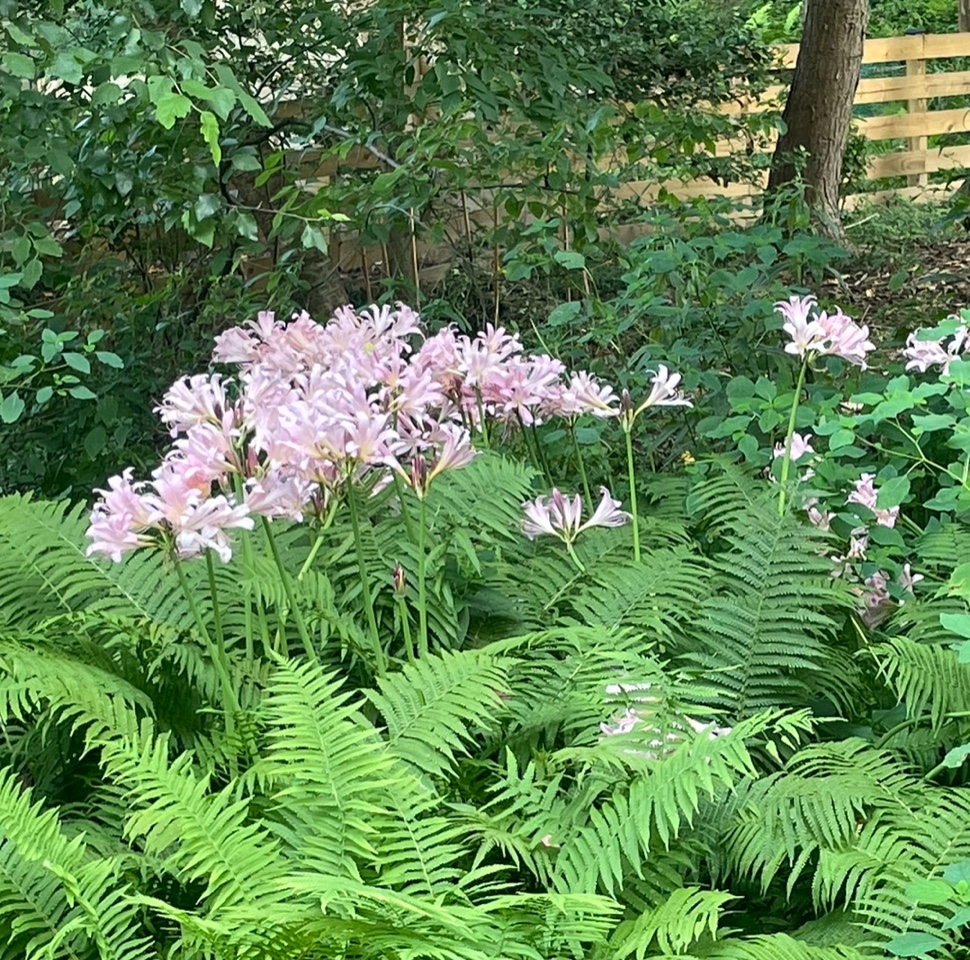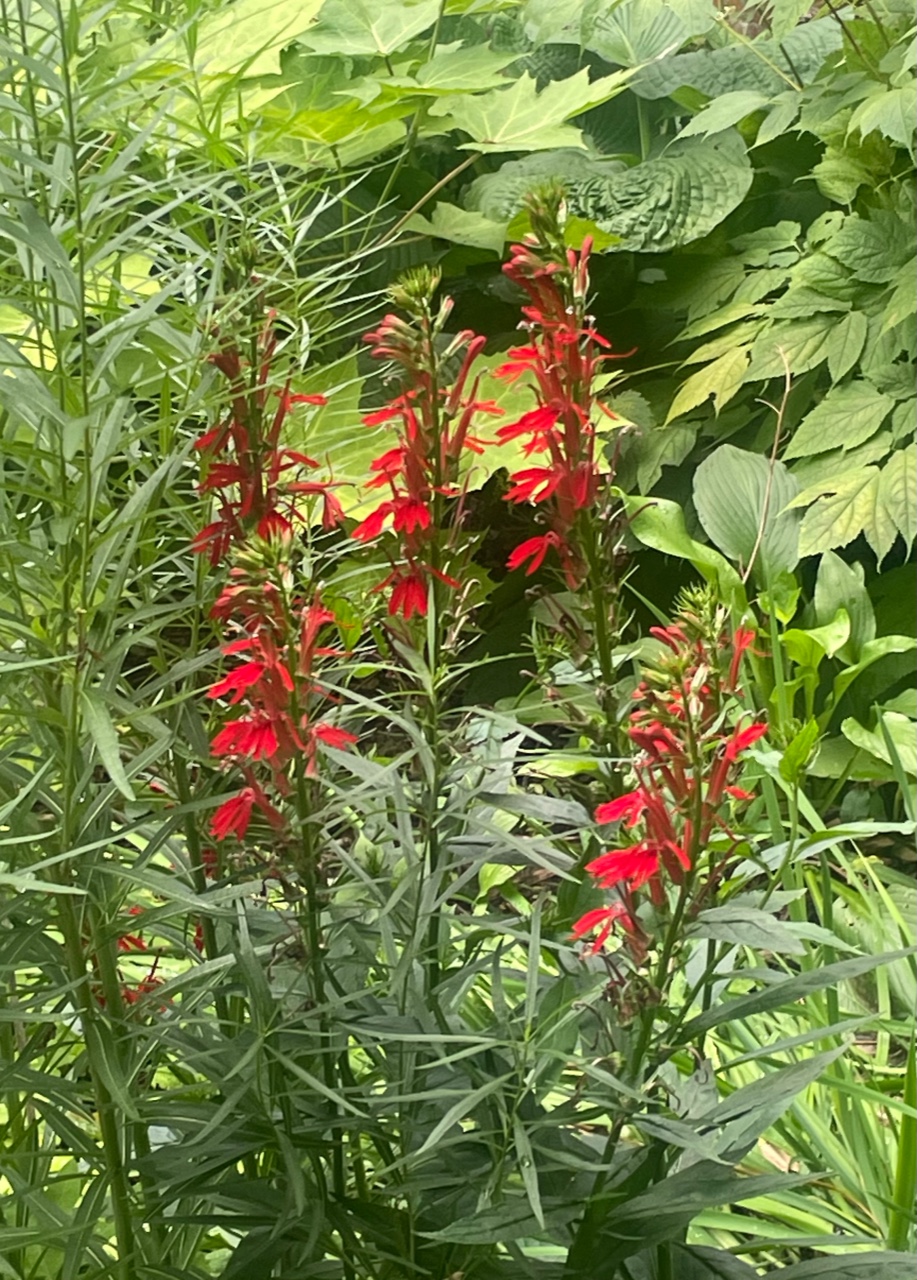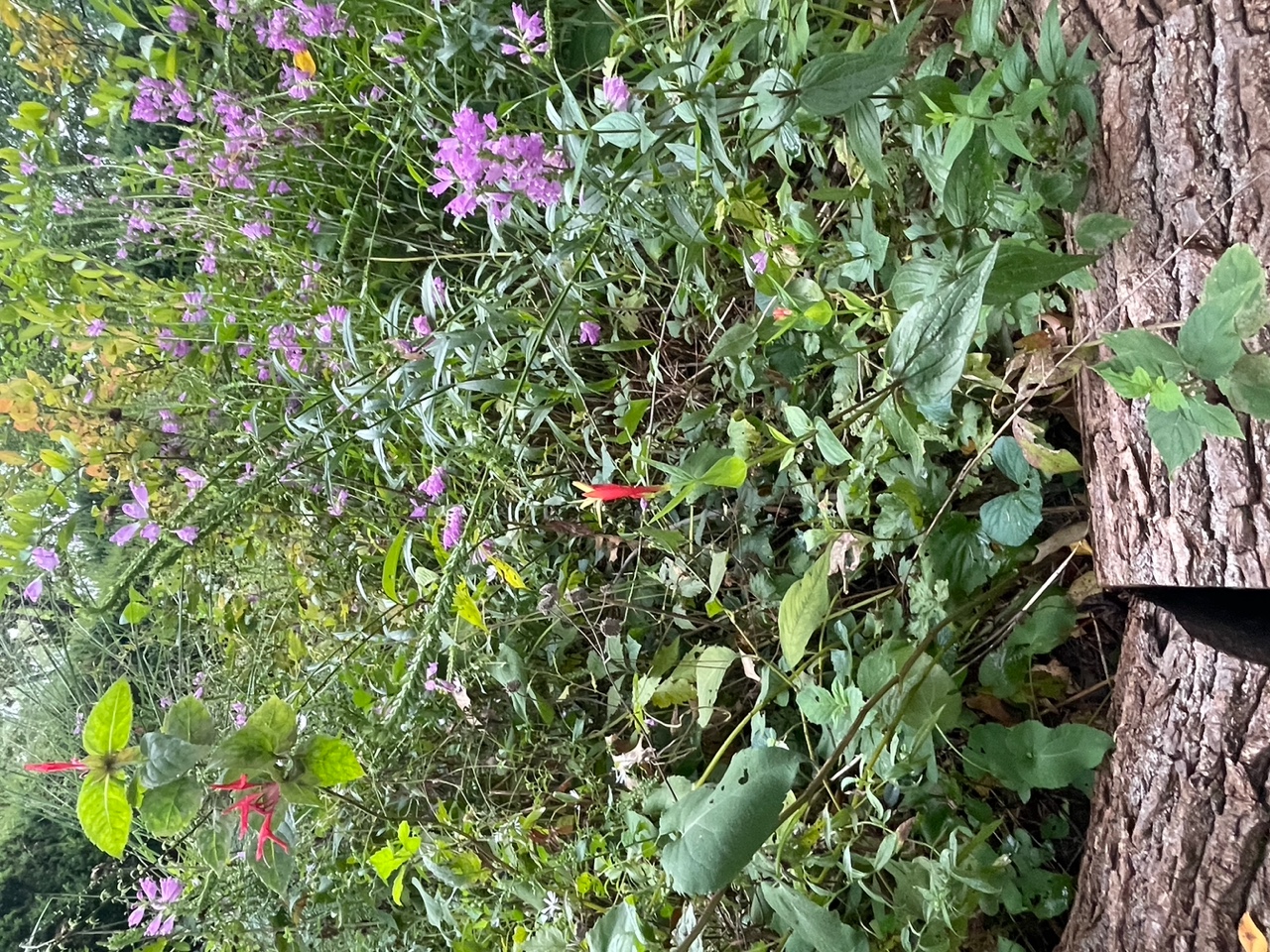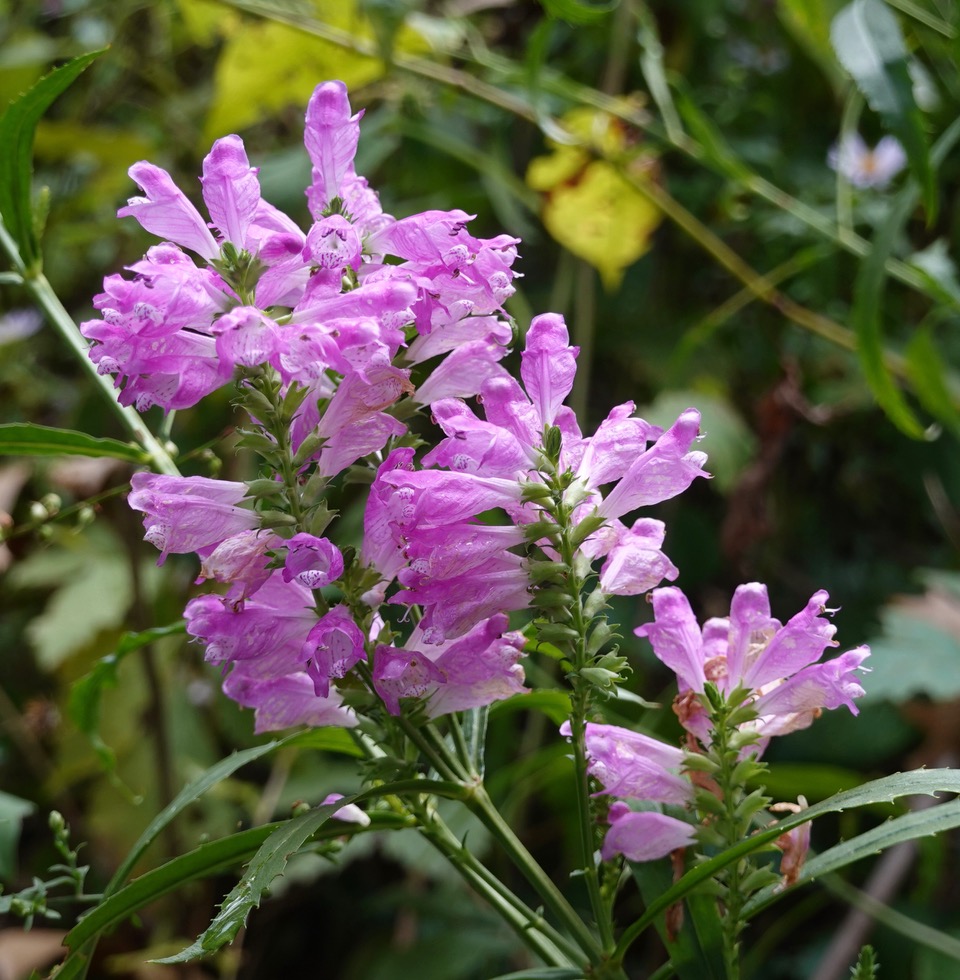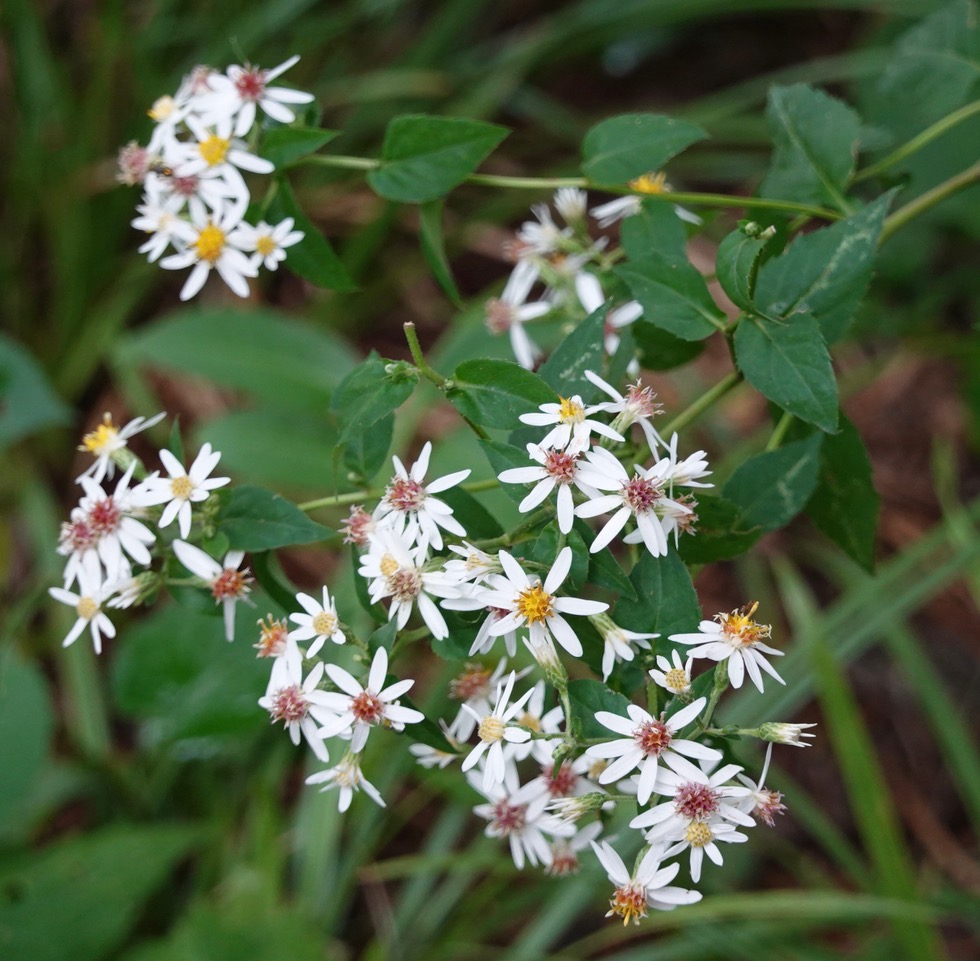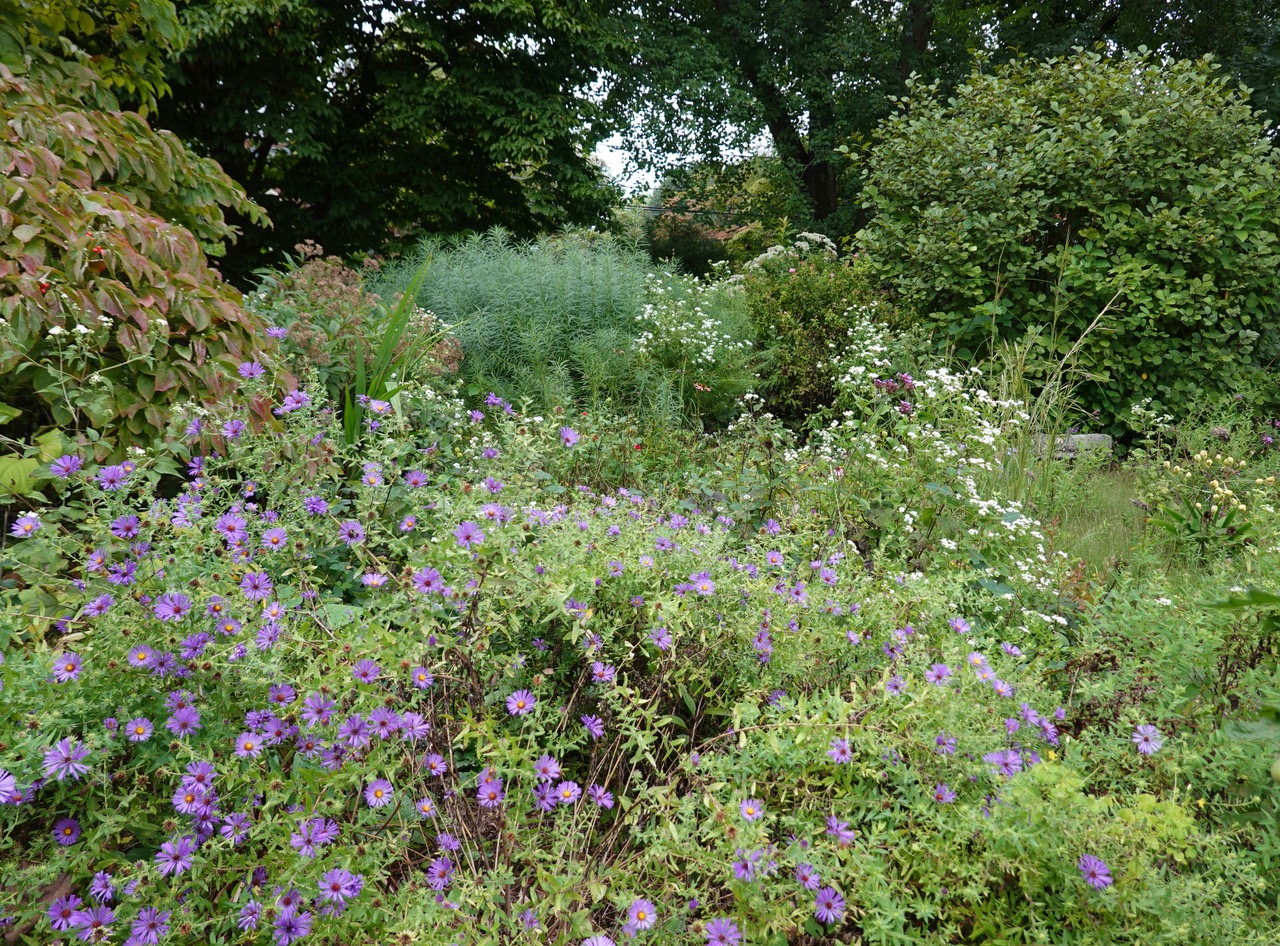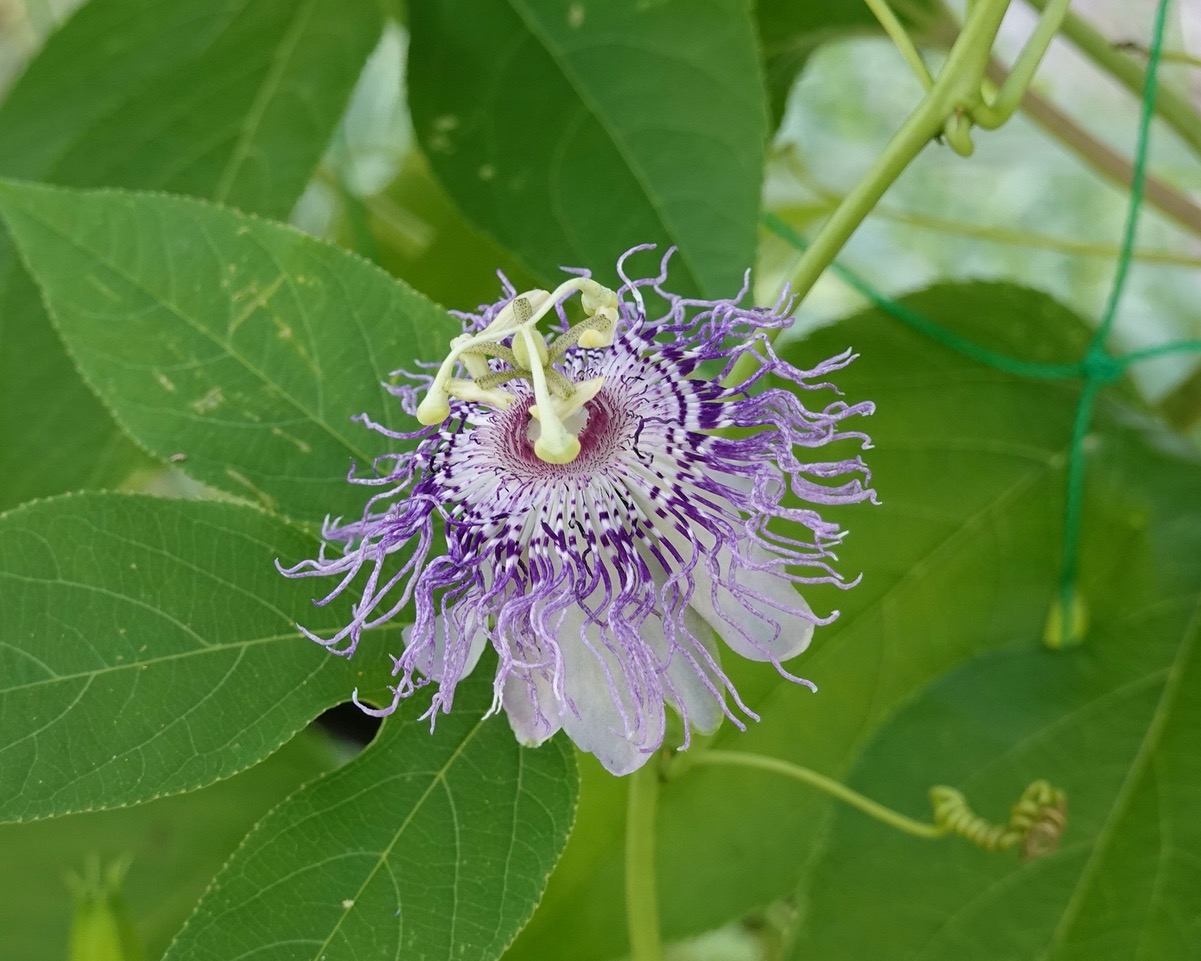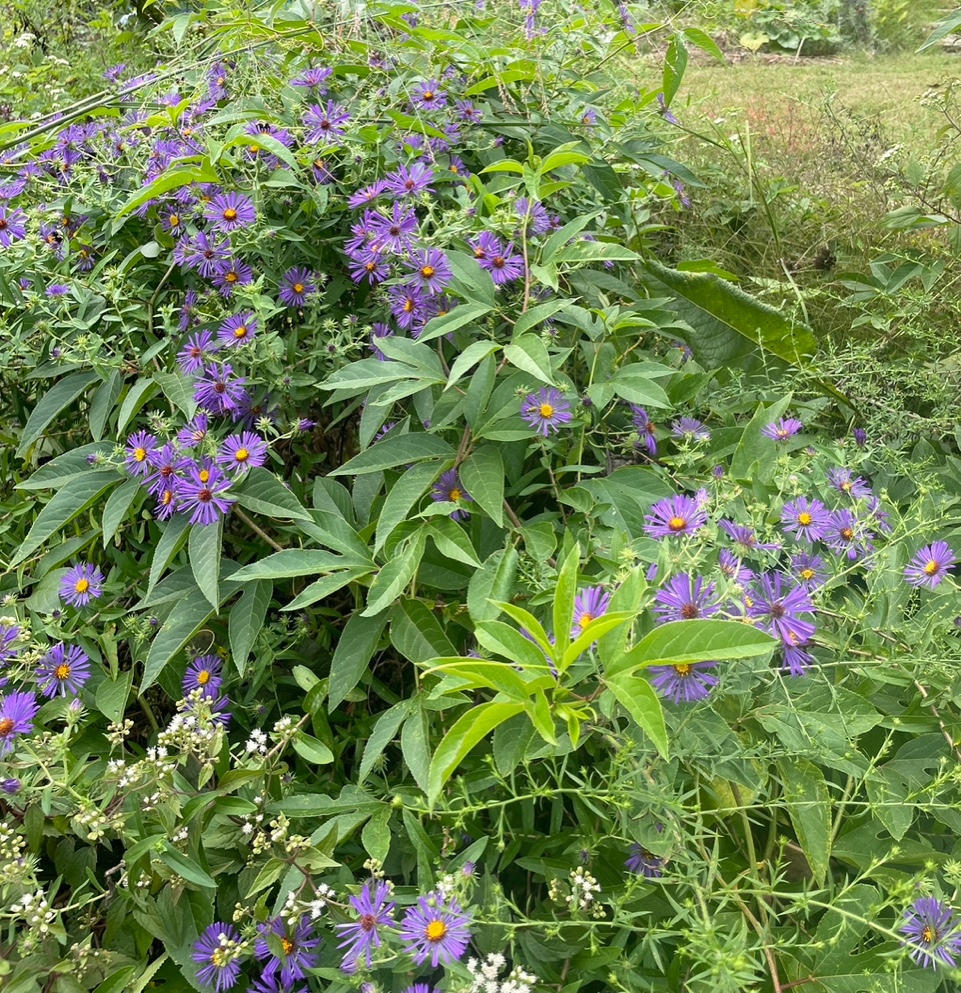As I contemplate the wonderful/frightening chaos of my August to September garden, I have been thinking about “garden worthiness,” particularly regarding native plants. The excellent people at Mt. Cuba Center do trials of many species looking into this very thing, and the criteria they use for evaluation include habit, vigor, and floral display, as well as support for pollinators and other wildlife. This is very helpful, as we probably all value these things in our different ways.
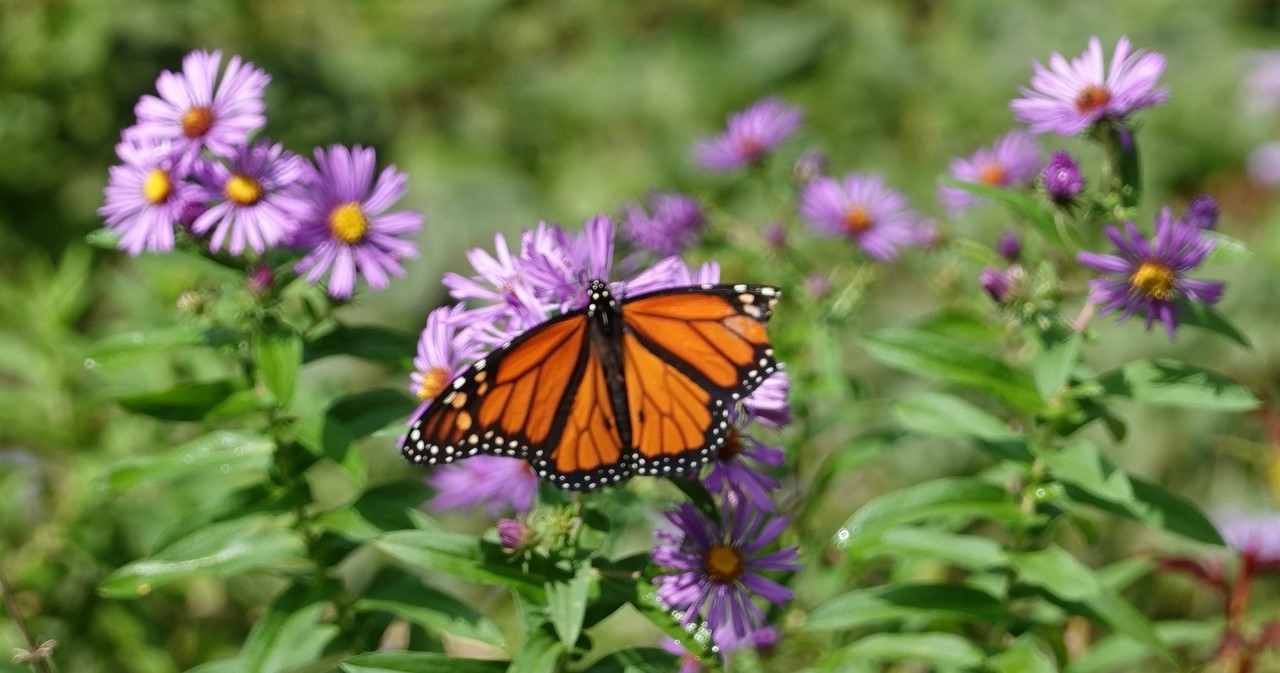
A big goal for me is wildlife value, but who doesn’t like beauty? For instance, in August the naked ladies (nonnative Lycoris squamigera) were closely followed by the cardinal flowers (native Lobelia cardinalis). I find both of these eminently garden worthy, since they perform well and are easy to control. Both have vivid flowers and pop up to brighten various more or less shady spots. Both are said to attract hummingbirds and butterflies.
Naked ladies in ostrich ferns (l) and cardinal flower (r)
The Lycoris, a traditional garden plant that was here when we moved in, has a shorter period of bloom (in my garden at least), and it spends most of its time invisibly underground. Mine grow happily among ostrich fern (unimpeachably native). They are pretty easy to dig up and move if necessary (though the odds are that they will reappear from bulb offsets). Cardinal flowers, still in bloom as I write, are less predictable in where they grow, since they may peter out in the face of competition. However, they can easily be started in new places: after the blooms have gone to seed, take the flower stalks and lay them down on lightly disturbed soil.
This year (thrilling to report), I still have Spigelia marilandica reblooming. Like cardinal flowers, Spigelia were challenging to establish, since at first deer found and nibbled them. It took a few seasons of fussy protection with barriers and stinks (and other plants growing up around them), but they now seem to hold their own and are eminently garden worthy. (I admit to giving the Spigelia the occasional spritz of peppermint-scented deer repellent. I don’t trust entirely to precedent.) Spigelia offspring have even sprung across the garden path—quite a feat considering all the aggressive things opposite: obedient plant (Physostegia virginiana) now blooming in the midst of black-eyed Susans, mountain mint, Monarda didyma, and others. The bees just love the obedient plant.
Clockwise from the left: Spigelia reblooming in competition with obedient plant; obedient plant closeup; obedient plant running riot
Then there are the plants that are challenging because establishing them is just too easy: aggressively rhizomatous or self-seeding plants. Their garden-worthiness can be hard to evaluate: how much management will they need in a given spot? Are you willing or able to restrain aggressively spreading roots by regularly digging them out or installing barriers? (Of course, if you’re dealing with a naturally bounded spot like a hell strip, aka a road verge, these might be just the ticket!)
In my garden, I like goldenrods and asters for their fall display and wildlife benefit, but I need to deal aggressively with those that don’t “play nice.” I find garden-worthy the shade-loving goldenrods like Solidago caesia (wreath goldenrod) and Solidago flexicaulis (zigzag goldenrod). For sunny spots, the selections and cultivars become useful: Solidago rugosa ‘Fireworks’ does spread, but much more slowly than (for instance) the truly thuggish Canada goldenrod (S. canadensis), which I have to dig out more and more. Solidago shortii ‘Solar Cascade’ is another cultivar that is a relatively slow spreader. You should take the “cascade” name seriously, however; it happily leans toward the sun and into my paths.
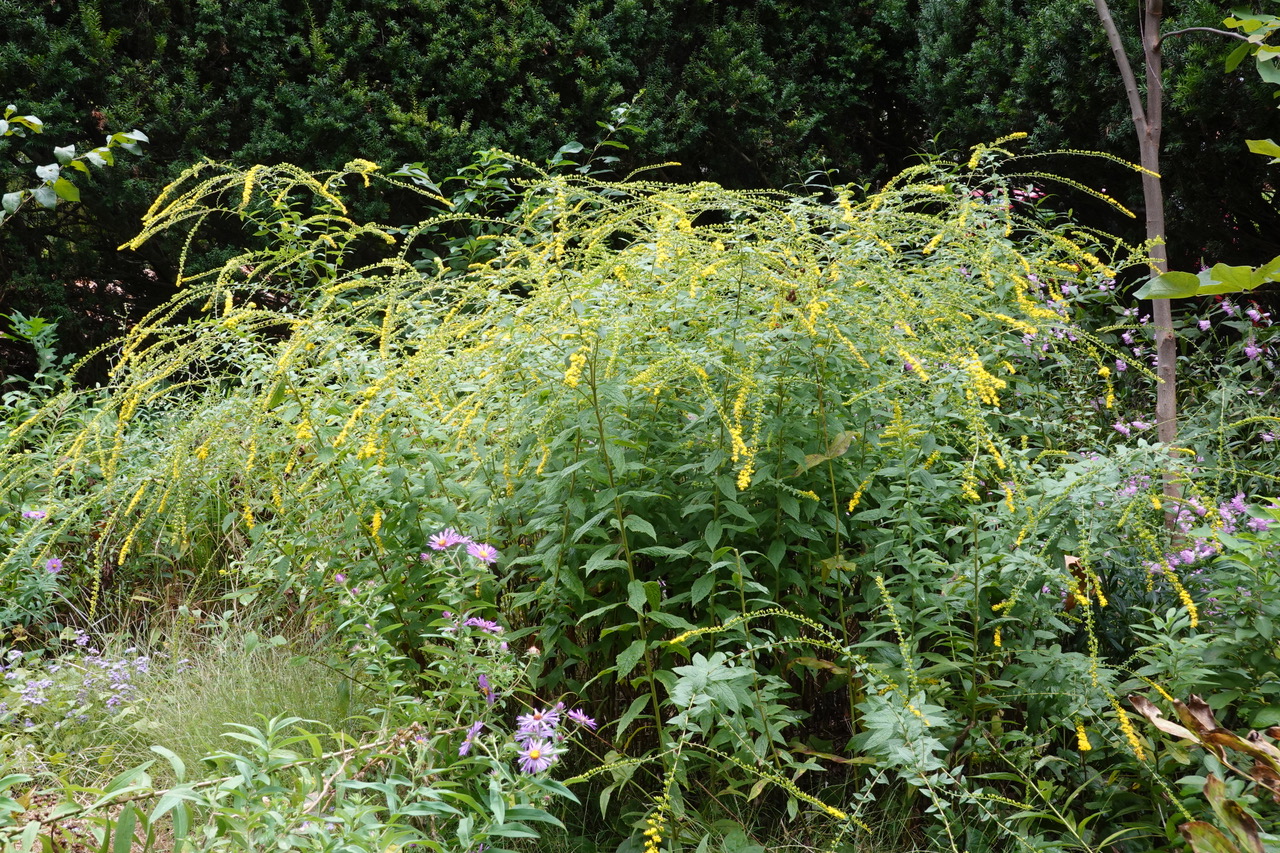
Shade-growing asters include the familiar white wood aster (Eurybia divaricata), which seeds around freely but I find welcome, especially as it will grow in dry shade. I’m also trying to establish a true shade lover, the rhizomatous big-leaved aster (Eurybia macrophylla), but it’s been slow—perhaps because it’s in my rather dry front yard. The blue wood aster, Symphyotrichum cordifolium, grows in sun or shade and seeds around, and so, as with many sun-loving asters, care must be taken. I ruthlessly pull out a lot of New England aster (Symphyotrichum novae-angliae), which would be happy to take over the world while displaying naked lower stems. But I do like it, especially against a sunny fence when it’s hemmed in by other plants. With asters, selections or cultivars can also be helpful. For instance, ‘Raydon’s Favorite’ and ‘October Skies’ are compact and manageable selections of aromatic aster (Symphyotrichum oblongifolium).
Clockwise from the top left: white wood aster; a pink aster; a profusion of asters, boneset, white snakeroot and others
One of the most attractive late summer natives is blue mist flower (Conoclinium coelestinum), which spreads by roots and self-seeding. It likes moist humusy soils in sun to part shade, which in my garden means it is happy along the edges of my sunny to part-sun wood chip paths, where log edging provides moisture. Maybe because it is growing in areas with lots of competition, I have not found it seeding excessively. However, I will need to stop it growing entirely into the paths.
A challenge for small gardens (or tight spots) is the plant, however garden-worthy, that just keeps getting bigger. The answer here is obviously “planning,” but alas! Mine is often not good enough. Research will not necessarily tell you whether a particular specimen will go crazy in a given spot. I know that in my garden some things get gigantic, but how to know which ones? In retrospect, I probably could have guessed that an elderberry (Sambucus canadensis) planted near our compost heaps might explode in its second year. But the big flowerheads turning to purple fruit (a bird favorite) are pretty spectacular.
Then there are the cup plants (Silphium perfoliatum). I knew they would be large. I soon learned they would self-seed. But I also realized that the deer browsed them. And the insects love, love, love them. Have I figured out how to manage them yet? Not exactly; I cut them back, but somehow never radically enough. I’m still working on it.
And don’t get me started on the gorgeous, rampant passionflower (Passiflora incarnata).
Clockwise from the left: passionflower fruit; passion flower closeup; passion flower vine on aster
